Aren’t we all just looking to connect with our kids, spouses, colleagues, and customers? But it’s becoming increasingly more difficult in this mobile world. Competition for attention is fierce and a true personal connection a rarity.
As a marketer and possibly a parent, you can probably relate to wanting to connect with today’s younger generation and earn their trust.
The challenge lies in getting through to them when they’re on their mobile devices. 1 out of 5 millennials open an app at least 50 times a day. How are you supposed to compete with that?
And when you finally find the latest trendy app or social platform to reach them, they’ve moved on to another. It’s hard to keep up with. That’s where conversational marketing can help.

CPGs actively looking for ways to reach millennials and younger consumers through their phones can deliver messages that resonate and get users to take action right away. 3 out of 4 teens regularly make purchases online, and the majority of them on their mobile devices.
More and more people are using their mobile devices to buy groceries and consumer goods online, especially through social media. And It’s not just the younger generations who are on their mobile devices.
80% of Americans shop online with more than half of the purchases being made on a mobile device.
Source: Pixel Union
It’s estimated that by next year mobile e-commerce sales will account for 54% of total e-commerce sales.
With conversational commerce, CPGs have the ability to make a personal connection, a sale, improve shopping experiences and win customer loyalty.
For the CPG marketer, there is no better way to connect with this younger age group than on their phones through social media and messaging. That’s how consumer packaged goods conversational commerce was born.
CPGs are seeing the potential and possibilities that conversational commerce has to offer. Here are 6 ways CPGs can use conversational marketing to drive sales, launch innovative products, connect with customers, and deliver a better user experience through personalization.
#1 Deliver Goods Instantly
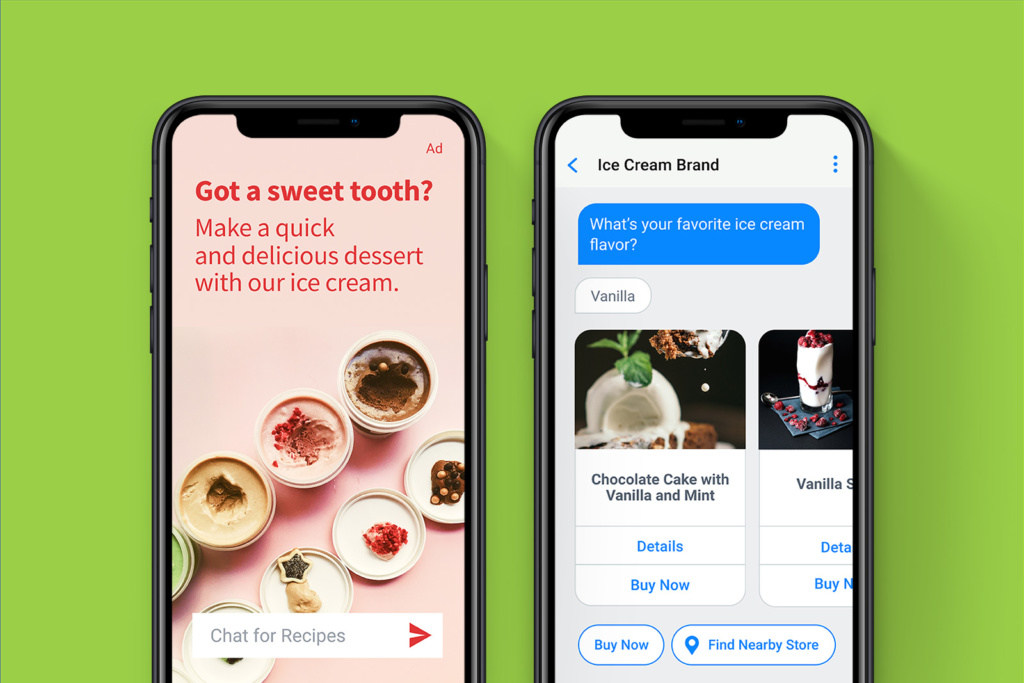
Conversational AI for consumer goods goes beyond an awareness campaign and takes it a step further, moving products from an online ad into the cart.
No longer do marketers have to wonder if their messages are being received by measuring impressions and likes. It takes the guesswork out of marketing and selling products.
Instead of a person seeing a flat ad and forgetting about it a few minutes later, they can take action right away within the ad. A viewer has the option to “buy now” or find a buying location.
The beauty of consumer packaged goods conversational commerce is the ability to show recipes that include the product and either receive same-day delivery or locate a store to buy the item.
In a survey completed by Accenture and commissioned by Facebook, to understand the food buying journey, they found 1 out of 4 18-34 years old are using a mobile device to make food purchases.
87% say they discover new food or recipe ideas on social platforms.
Source: Facebook
Marketers have the ability to create conversational, dynamic ads easily with existing creative and they have more insight into behavior with readily available data.
Conversational ads can be used for new product discovery, trials, and in launching niche products to specific audiences. For example, Absolut Vodka used a bot through Facebook Messenger to offer customers a complimentary drink at a bar near them.
Absolut’s goal was to specifically target millennials on their phones at bars to increase trial and purchases. The results of the campaign exceeded their expectations with 4.7x the sales lift and a 2x greater activation rate.
Through conversational AI, brands are a part of the complete buyer journey from start to finish, using the machine learning technology to drive sales and get products into the hands of consumers with the click of a button.
#2 Go Direct-to-Consumer
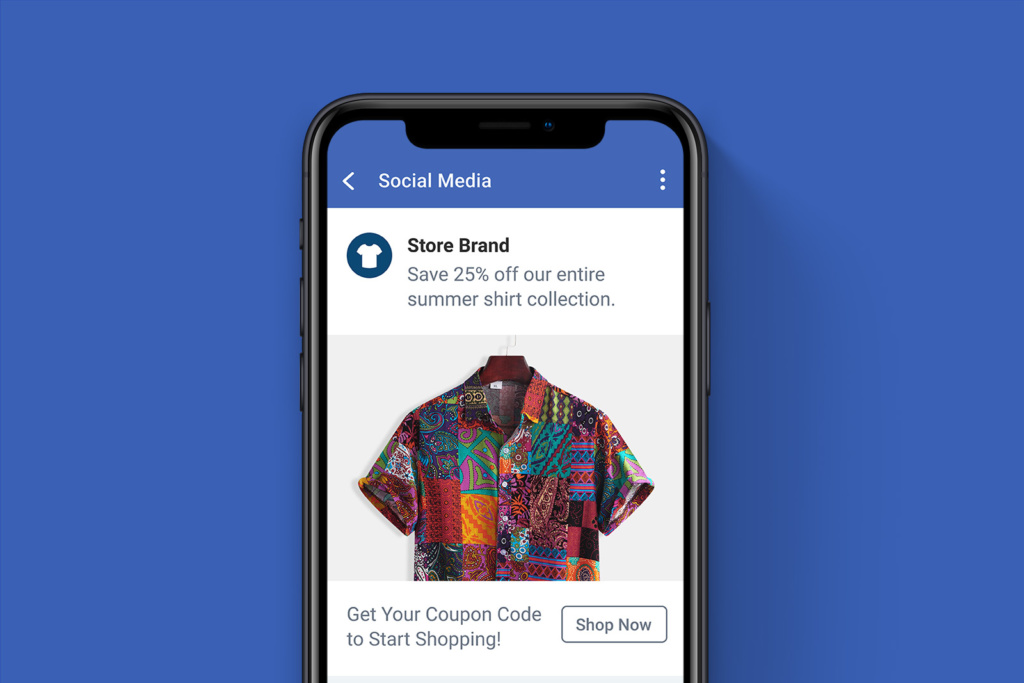
CPGs can meet the needs of consumers by going directly to them-through mobile. Direct-to-consumer advertising has been an emerging digital trend.
CPG giants have caught on to this new way of selling that was first popularized by startups like The Dollar Shave Club and Warby Parker.
Big brands such as Oreo and Huggies have been launching subscription models and separate websites and apps to completely bypass the retailer.
The direct-to-consumer model largely happens on social media and through messaging. And consumers not only prefer it, they expect it.
Two-thirds of consumers expect to be contacted directly by the brands they purchase from.
Source: IAB
Going directly to consumers benefits CPGs in a number of ways. First, they can decrease the costs of products by cutting out the middleman of the retailer. Second, they have more control over the customer experience & relationship, and more importantly the data.
Product manufacturers can deploy the direct-to-consumer model with the aid of conversational commerce. Frictionless commerce is what it is all about: capturing sales, data, and establishing relationships directly through a broadcast messaging platform.
#3 Personalize Conversations
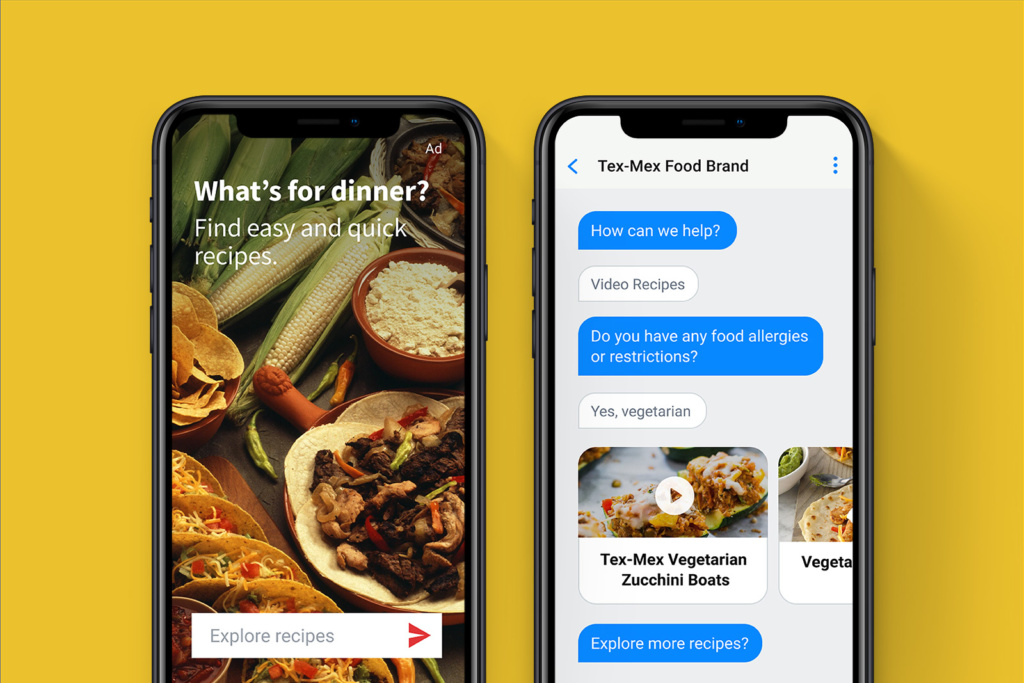
The obvious application of conversational marketing is the ability to have a one-on-one conversation with customers. A conversation that’s personal and intentional.
Marketers can learn about their customers and provide tailored goods and services to their needs and tastes. For instance, CPGs can help families solve the answer to the age-old question of “what’s for dinner?”
Picture someone surfing on their mobile device for recipe inspiration. A chat option appears with a leading Tex-Mex brand asking how they can help. The person types in “video” and instructional video recipes appear on the screen.
Conversational AI to the rescue.
The brand replies with “do you have any food allergies or restrictions?”. The person types back “yes” “vegetarian”. And recipes for vegetarian Mexican dishes appear.
The customization and learning opportunities for companies are powerful if they know how to leverage the tool and the data they collect from conversations.
Personalization goes a long way to build loyalty and trust. Good personalized mobile experiences are the key to winning trust and wallets. Through one-on-one, personalized digital interactions, your consumer brand will gain loyalty.
81% of consumers are more likely to make a purchase when offered a personalized experience.
Source: Epsilon
#4 Reconnect with Customers
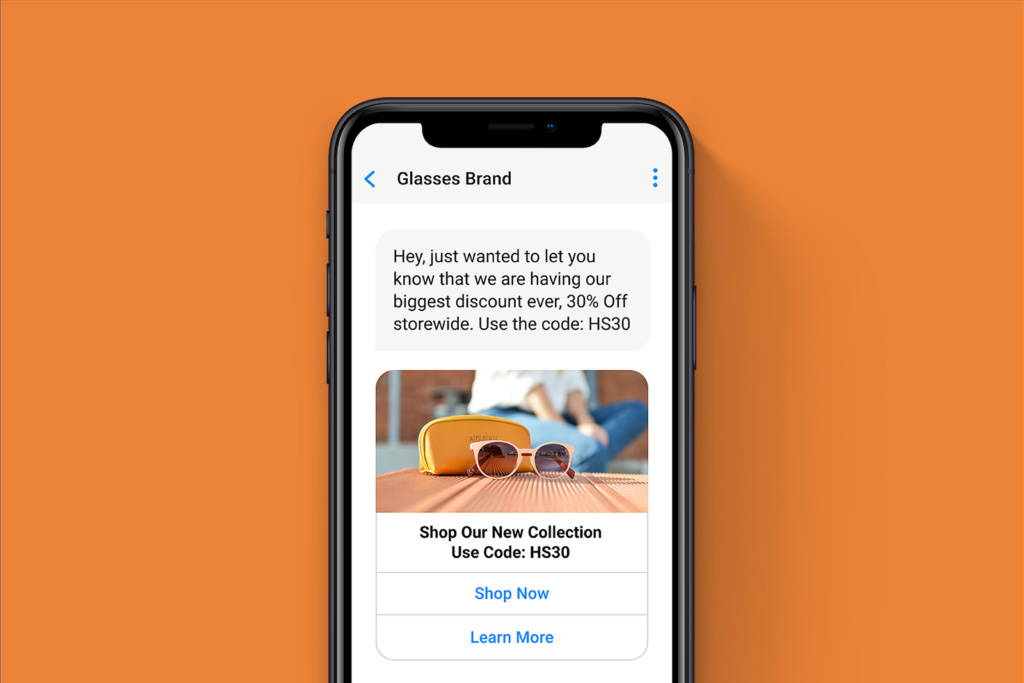
Brands can use conversational commerce to reconnect with customers who might have disengaged and welcome them back with a deal.
HiSmile, maker of at-home teeth whitening products wanted to reconnect with customers to increase sales and satisfaction, as repeat uses of its product are the best way to achieve the desired results of whiter teeth. They also wanted to retain their younger audience with special deals.
They sent messages at key purchase times to previous customers who had contacted them via Facebook Messenger. The message was a friendly reminder of their product with an image of someone using the product and a discount code for 30% off.
In two months, HiSimile received 9.9x their return on ad spend and 11x lower cost per purchase compared to other avenues.
Conversational marketing is a way CPGs can re-engage customers with loyalty offers, drive sales, and connect in a new way.
#5 Educate and Guide
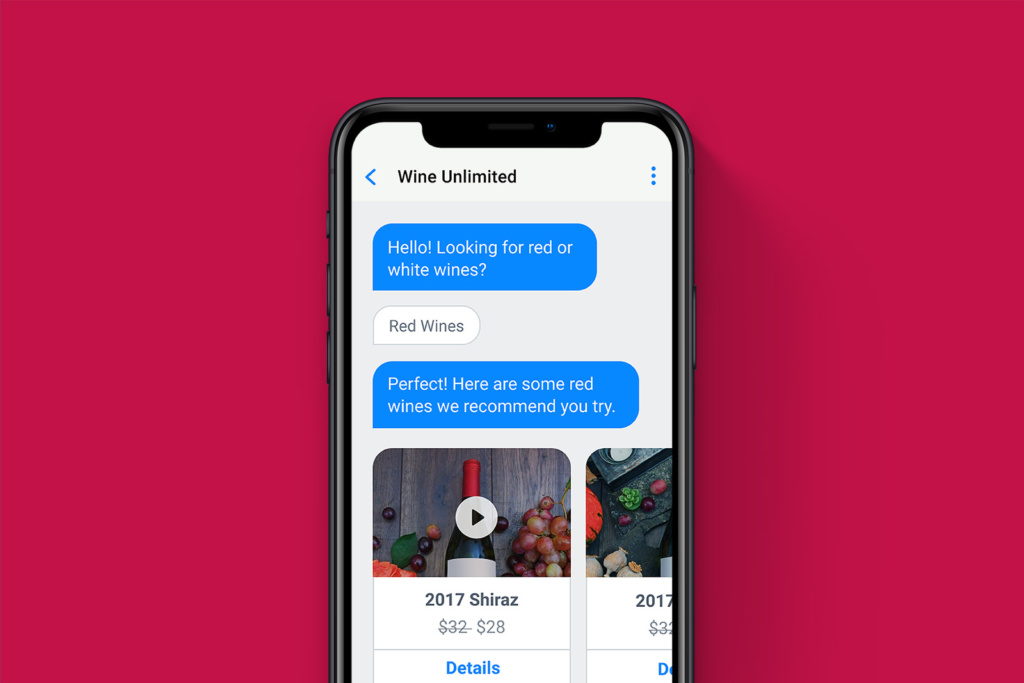
Brands have the opportunity to get creative with artificial intelligence to connect with the mobile consumer and position themselves as a leader in their category at the same time.
Marketers have the opportunity to lead and educate their customers through FAQs, content, instructional videos, and incentives. Several industries such as the financial and banking industry are already leveraging AI for FAQs and customer service.
In the CPG industry, Danone’s Activia created common product FAQs and content to inform users of new products. From product education to games and entertainment, companies are cooking up ways to assist and connect with their target audience.
Trolli candy has created interactive quizzes, personalized “creatures”, and fun prompts to interact and engage digitally with millennial fans. The bot personifies the fun and weird identity of the brand.
Unilever designed an interactive educational video to teach kids about proper teeth brushing habits and techniques. The video is designed to tell children a story each night when they are brushing their teeth and can even be personalized with the children’s names. The kids receive badges when a parent approves of their brushing skills.
Brands can set themselves apart by communicating in a fun and helpful way that relates to their product and their brand. This keeps them top of mind when a person goes to make a purchase.
#6 Understand Preferences and Behaviors
CPGs are no stranger to data. Data drives decision making. But historically, the sources for data have been limited.
Data is owned by the retailer at the point-of-sale and purchased through syndicate providers. And the data is collected from past purchases, which doesn’t allow an analysis of current behaviors or predict the future.
By using conversational AI, CPGs own the data and get real-time insights into personal preferences and habits. Brands can then use these insights to anticipate future trends and launch innovative products.
The data gathered from conversational marketing is the most accurate data out there because it happens in real-time. Take the weather for instance. Companies have no way to react quickly to changes in the demand caused by weather events or crises.
If a snowstorm hits Florida and the demand for canned soup skyrockets, a canned goods manufacturer can sell directly through a messaging platform to meet demand and avoid missed sales opportunities.
A more everyday example of how brands can leverage the data from this technology is learning a customer’s favorite flavor and understanding new behaviors.
Unilever discovered songs referencing “ice-cream for breakfast” through AI. This insight led them to launch a new product line of breakfast flavored Ben & Jerry’s. Unilever predicted this line would be a hit and it was.
In the future, more CPGs will be using the power of conversational commerce to not only understand customer behavior better, but leverage data patterns from customer interactions to get ahead of user trends.
The New Store Shelf
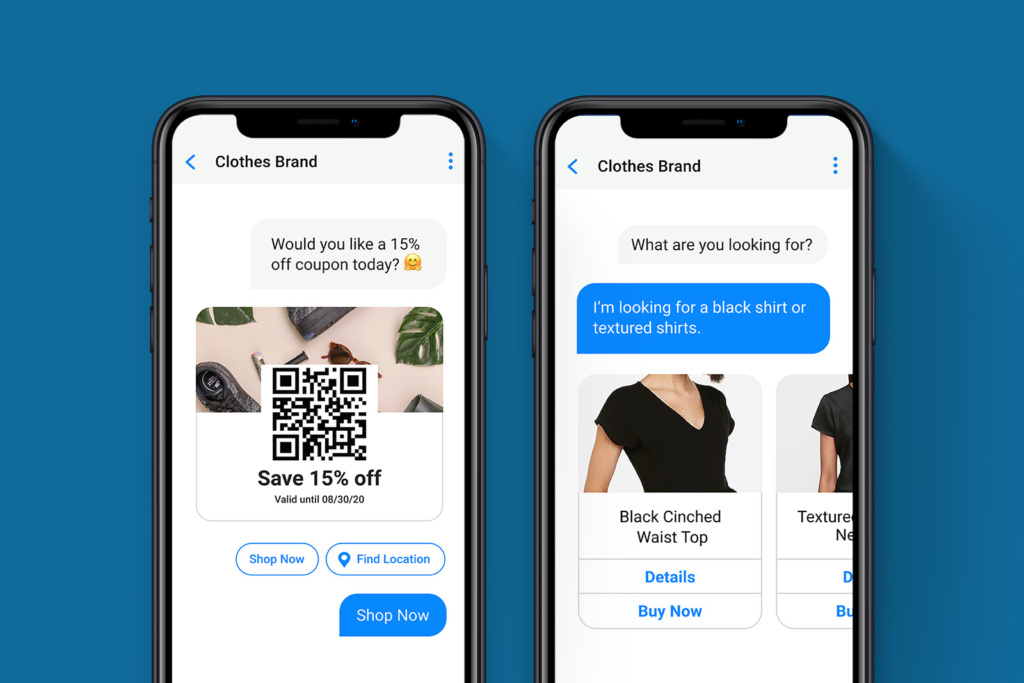
CPGs should start seeing messaging apps and social media as the new store shelf. Brands can talk directly to the consumer, sell products, and get valuable data.
CPGs have the opportunity to think outside the box as far as how they can leverage AI. Some of the insights could even be a spark for innovation.
Conversational marketing increases satisfaction and engagement and in several cases has been shown to exceed campaign objectives. It’s time more CPGs get on board with where the future of consumer goods conversational commerce is heading.
Subscribe to our Newsletter
Free Trial
Get Started With RCS
Business Messaging!
Unlock the power of RCS and revolutionize your customer engagement.



